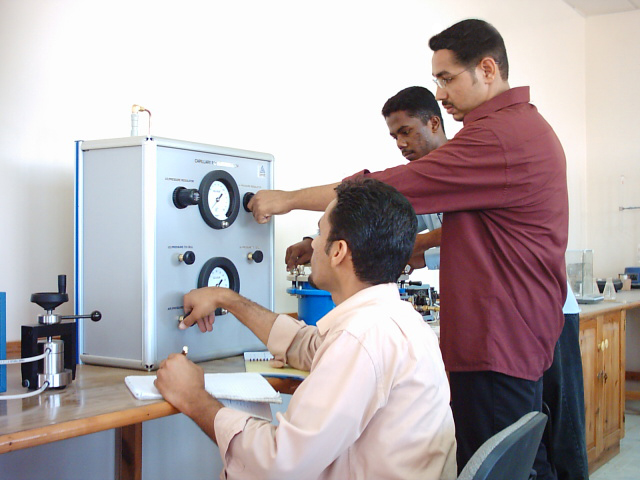
Petroleum Engineering Laboratory
| No. | Laboratory | Related Courses | Overview |
|---|---|---|---|
|
1 |
Drilling Fluid |
Drilling Eng. (1) PET (324) Drilling Eng. (2) PET (415) |
The Drilling Fluid Lab is one of the most important labs of the Petroleum Engineering Department. Some experiments that are conducted in the lab are the following: preparation of spud mud, measuring the density of drilling fluid by mud balance, measuring the time viscosity via marsh funnel, sand content of the mud, Electrical stability, plastic viscosity measurement, yield point, and gel strength, viscosity measurement at low temperature, and pH of the drilling fluid. |
|
2 |
Reservoir Rocks Properties |
Reservoir Rock Properties PET (222) Reservoir Eng. 1 PET (325) EOR PET (424) |
The Reservoir Rock Properties Laboratory is considered one of the most important laboratories within the Petroleum Engineering Department. It hosts a variety of experiments specifically designed for petroleum engineering students, allowing them to explore and understand the properties of reservoir rocks that contain hydrocarbons (oil and gas). The experiments conducted by students in this laboratory include the measurement of rock porosity, which refers to the rock’s ability to hold hydrocarbons, using instruments such as the HP Porometer and the Gas Porosimeter. Rock permeability, which is the rock’s ability to transmit hydrocarbons, is measured using the Liquid Permeameter and the Gas Permeameter. Saturation is assessed to determine the extent to which the rock is filled with hydrocarbons and water, using the Saturator device. Relative permeability is calculated to evaluate the flow capacities of oil, gas, and water within the reservoir, identifying the phases of each fluid and their respective flow ratios through the rock, using the Relative Permeability device. Capillary pressure is measured to determine the ability of hydrocarbons and water to rise in narrow capillaries, using the Capillary Pressure device. Seismic surveying is also conducted to identify subsurface geological structures and assess their potential to contain hydrocarbons, using a Seismograph. Additionally, the laboratory is equipped with several auxiliary devices, including a sample cutting and preparation device for adjusting samples to the appropriate dimensions for testing, a hydrocarbon extraction device for removing hydrocarbons from hydrocarbon-bearing samples, a cleaning device for hydrocarbon-saturated samples, a precision electronic balance for weighing clean samples, and an air pump . |
|
3 |
Geology |
Geophysics PET (323) Petroleum Geology PET (322) |
This Lab contains several types of rocks so that the student knows about these rocks and their types, how they are formed, and the designs of strata. |








